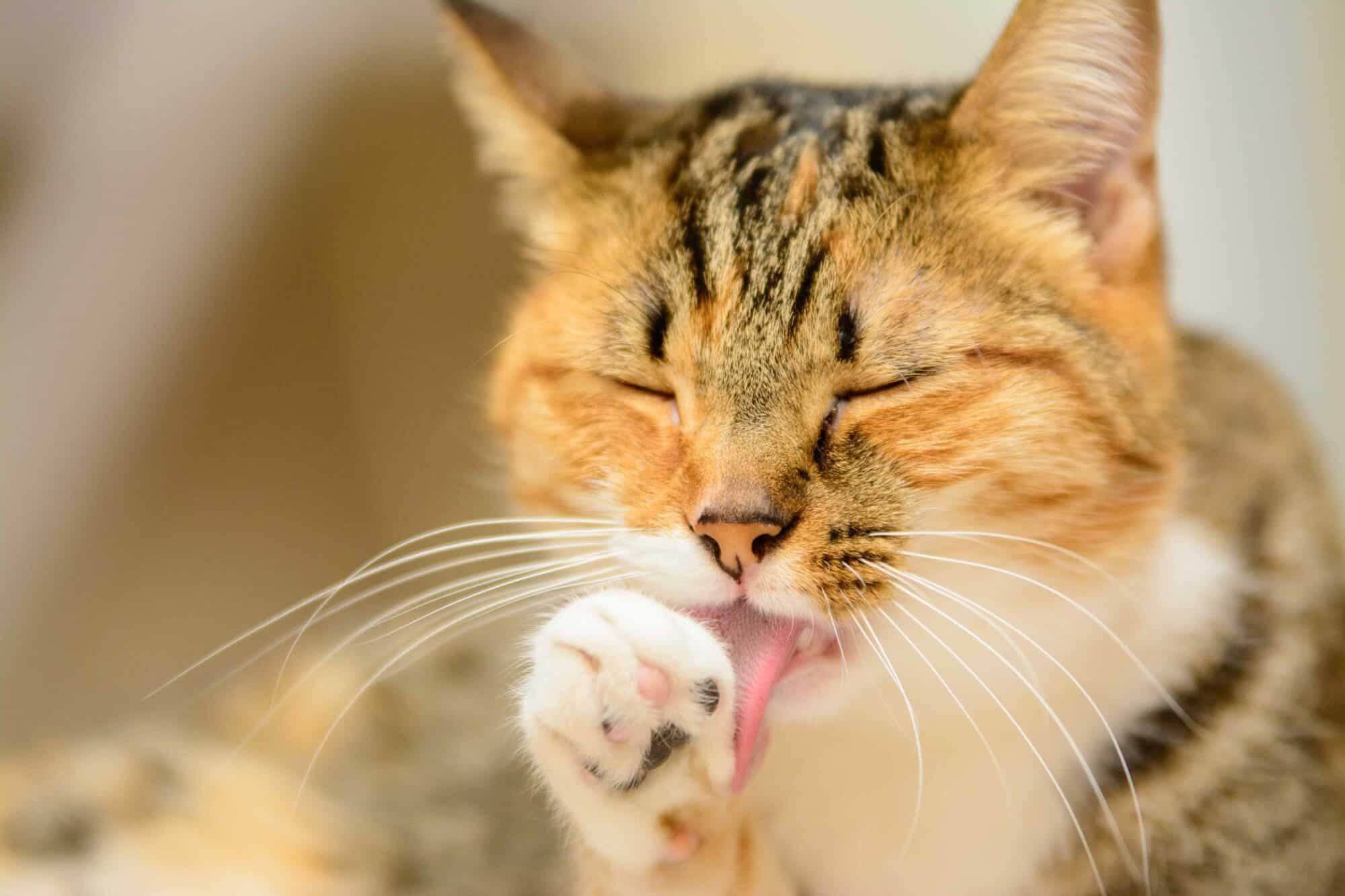Cat Hairballs and What You Should Know About Them

You can hear the cat retching and you race to grab the paper towels. You know what’s coming, the dreaded hairball extrusion. There it is, on your freshly washed comforter, a log of compacted hair wet with bile and kitty’s digestive juices. Disgusting? Yes. A health problem? Maybe. What you don’t know about hairballs could be dangerous for your cat.
Why Do Cats Get Hairballs?
Your cat will inevitably develop hairballs because their grooming practices cause them to swallow strands of fur. Usually, the hairs will pass through their digestive system and be eliminated in the litter box. But sometimes, the hairs don’t make it out of the cat’s stomach. When that happens, the hair strands collect in clumps and need to be ejected in some other way. Hack. Hack. Hack.
What Does My Cat’s Tongue Have To Do With Hairballs?
Cat tongues have a rough surface that collects hairs as they groom. The tongue is covered with papillae—tiny, backward-facing spines. The papillae are hollow and shaped like a scoop, making them useful for lapping milk and water. They also hold saliva, which is a cat’s fur-cleaning agent. As your cat cleans itself, those spiny papillae pull strands of hair up and send them down the kitty’s throat. That’s where hairballs begin!
Are Hairballs Dangerous For My Cat?
Sometimes your cat can’t pass hairballs, and that can lead to serious health problems. Long-haired cats are at greater risk for complications from hairballs. Signs your cat may have a hairball health problem include:
- Your cat vomits hairballs more often than once a month—this could indicate a gastrointestinal problem.
- Your cat seems to be excessively grooming—this behavior can create more hairballs and indicate that your cat is stressed.
- Your cat cannot pass or vomit hairballs—this could mean that medical intervention is required, often medication or surgery.
If your cat is having these issues, call us at (916) 624‑7387 to schedule a wellness check right away! In addition, your pet may need diagnostic testing to determine what treatment or procedure is needed to help relieve your pet’s symptoms.
How Can I Help Prevent Hairballs?
If your cat is successful in vomiting hairballs, there is nothing you can do to help. Leave the cat alone and prepare for cleanup! However, there are things you can do to reduce the amount of hair Fluffy swallows and treatments that allow hairballs to pass more easily.
- Daily brushing—the more you brush away loose hairs, the less hair your cat will swallow.
- Regular visits to the groomer—If your cat doesn’t like brushing at home, make regular appointments with a groomer for kitty haircuts.
- Hairball preventive treats and foods—Before treating your cat with a hairball preventive, discuss options with your trusted veterinarian. They may recommend tasty hairball treatments or special hairball cat food.
Schedule a Pet Wellness Visit To Learn More
At Rocklin Ranch Veterinary Hospital, we’re here to help keep your family pets happy and healthy. Be sure to schedule annual wellness visits and always call us with questions or concerns about pet health. In addition, we offer multiple resources for you to learn more about how to care for your fur family.

